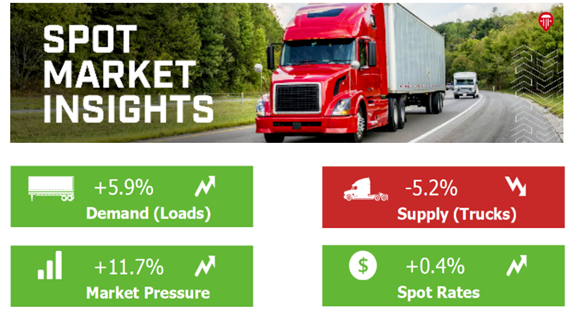Nonostante un senso di esitazione tra gli acquirenti di camion riguardo all'espansione della flotta, i dati preliminari di luglio indicano una notevole ripresa rispetto ai dati di giugno.
Class 8 Orders Show Improvement Yet Fall Short of Averages
The preliminary net orders for Class 8 trucks reached 12,700 units in July, showing a 42% increase from the dismal totals of June. However, this figure still reflects a 7% decline year over year, marking the seventh consecutive month of decreases in annual orders.
When evaluated against the ten-year average for July, which stands at 19,974 units, the current figures demonstrate ongoing caution among fleet operators. The decline in orders was particularly notable within the on-highway segment.
According to Dan Moyer, a senior analyst for commercial vehicles, “Ongoing tariff volatility and the sluggish state of the broader economy and truck freight market continue to impact the Class 8 sector, resulting in a 30% decline in year-to-date net orders.” Concerns are heightened further by potential Section 232 tariffs aimed specifically at trucks, tractors, and related parts. Moreover, uncertainty regarding possible revisions to NOx emissions standards by the Environmental Protection Agency adds layers of complexity that deter many fleets from investing in new commercial vehicles. Meanwhile, the present record-high inventory levels exert additional downward pressure on Class 8 vehicle production.
For the broader category encompassing Classes 5-8, net orders totaled 26,200 units, reflecting a 10% drop compared to the previous year, as noted by ACT Research.
Carter Vieth, a research analyst at ACT Research, observed, “Although the economy is growing—expanding 3% quarter over quarter in Q2—uncertainty, high equipment prices, and nascent signs of economic softness are weighing down commercial vehicle demand.” The stagnation in freight-generating sectors, particularly housing and manufacturing, along with a slight uptick in layoffs over the past three months, has further compounded this issue. While consumer spending remains steady, escalating prices due to tariffs and a weakening labor market may begin to affect spending on goods.
ACT’s report indicated Class 8 orders totaled 13,300 units, down 1.9% year over year, while Classes 5-7 saw orders of 13,000, reflecting a 17% year-on-year plunge.
Spot Market Observations Show Modest Gains
Recent insights from Truckstop.com and FTR Transportation Intelligence reveal that the Market Demand Index saw a boost last week, reaching its highest level in three weeks.
Truckstop.com noted, “Broker-posted spot rates for both dry van and refrigerated equipment have shown minor increases for the first time in four weeks during the week concluding on August 1.” However, these increases could be better characterized as modest.
Meanwhile, flatbed spot rates have continued their descent for the fourth consecutive week; yet, the decrease observed recently was relatively minor. The movements across all three types of equipment—reefer, van, and flatbed—align with seasonal expectations as the market heads into August.
James Menzies, the editorial director for Today’s Trucking and TruckNews.com, carries extensive experience covering the Canadian trucking industry for over two decades. His insights reflect the complexities of today’s transport landscape, especially for logistics providers.
Implicazioni per il settore logistico
As truck demand and inventory levels fluctuate, logistics providers and companies engaged in transportation and distribution must remain agile. Lower truck orders could lead to tighter market constraints, impacting availability and ultimately affecting shipping costs for businesses reliant on shipping large goods. This situation may prompt logistics companies to reevaluate their supply chains, ensuring they adapt to fluctuating freight demand while strategizing to maintain competitive pricing.
The Relationships Between Trucking and Logistics Markets:
- Economic Health: Construction and manufacturing demand influences trucking volumes.
- Regulatory Changes: Tariffs could impact operational costs and decisions.
- Market Agility: Companies must adapt to changing consumer behaviors and freight patterns.
In this evolving landscape, logistics players like GetTransport.com can step in to provide affordable global cargo transportation solutions. Whether it’s managing an office move, overseeing freight deliveries, or transporting oversized items like furniture or vehicles, their network suits diverse shipping needs.
Ultimately, while reviews and expert opinions can be illuminating, nothing beats firsthand experience when it comes to logistics. GetTransport.com empowers you to make well-informed choices for your cargo transportation needs, ensuring that you don’t encounter unnecessary costs or disappointments. Their commitment to transparency and convenience is built right into their service.
For those seeking to navigate the complexities of freight transport, GetTransport.com presents an attractive option. Consider the advantages of their extensive offerings, allowing you to manage logistics effectively while meeting diverse transportation needs with ease and affordability. Book now at GetTransport.com.
In conclusion, the trends observed in truck orders and spot market movements are indeed pivotal for the logistics industry. They represent shifts in cargo demand and reflect broader economic conditions. Staying ahead of the curve is essential, and with platforms like GetTransport.com, navigating these waters becomes a lot easier. By offering reliable, cost-effective solutions for moving cargo and coordinating logistics, they help businesses stay agile in the face of changing market dynamics.

 A luglio gli ordini di autocarri aumentano nonostante l'esitazione degli acquirenti">
A luglio gli ordini di autocarri aumentano nonostante l'esitazione degli acquirenti">